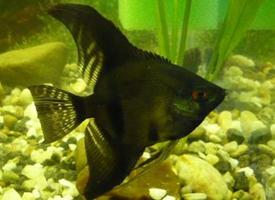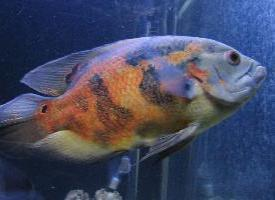
Súlyok és méretek
| Hossz | 15 cm |
|---|
Állatleírás
Angelfish, scientifically known as Pterophyllum scalare, is a captivating and elegant freshwater fish that belongs to the Cichlidae family. Native to the Amazon Basin, Orinoco Basin, and various rivers in the Guiana Shield in South America, this species has also become a popular choice for aquarists around the world due to its distinctive appearance and interesting behavior.One of the most striking features of the angelfish is its unique body shape. The fish possesses a laterally compressed body, which means it is very thin when viewed from the front but appears tall and elongated from the side. This adaptation allows it to navigate effortlessly through the densely vegetated waterways of its natural habitat. The angelfish's fins are another remarkable aspect of its anatomy. It has long and flowing dorsal and anal fins that extend from the middle of its body to its caudal peduncle, giving it an appearance reminiscent of an angel's wings, hence its common name. The caudal fin is fan-shaped, adding to its graceful swimming motion.
Angelfish typically display a variety of colors and patterns, ranging from silver with vertical black stripes to more elaborate colorations including gold, black, marble, and koi variants. These beautiful markings not only make them a favorite among aquarium enthusiasts but also serve as camouflage among the water plants and roots in their natural environment.
Reaching up to 6 inches in length and 10 inches in height, angelfish require a spacious aquarium with plenty of vertical space to accommodate their tall bodies. They thrive in warm, slightly acidic to neutral pH water that mimics their natural Amazonian habitats. Decorations that replicate their natural environment, such as plants and driftwood, provide them with hiding places and reduce stress, contributing to their well-being in captivity.
Angelfish are known for their complex social behavior. They establish hierarchies within their groups and are known to form monogamous pairs. During breeding, these pairs become territorial and work together to protect their eggs and fry. The female lays the eggs on a flat surface, such as a leaf or a piece of driftwood, which are then fertilized by the male. Both parents are often involved in guarding and tending to their offspring, showcasing a level of parental care that is quite fascinating to observe.
Feeding angelfish requires a balanced diet that includes a variety of foods. In the wild, their diet consists of small invertebrates, crustaceans, and plant matter. In captivity, they can be fed a mix of flakes, pellets, frozen, and live foods to ensure they receive all the necessary nutrients.
Despite their peaceful appearance, angelfish can be quite territorial and may show aggression towards other fish, especially when breeding. It's important for aquarists to carefully consider tank mates and ensure that the aquarium is large enough to provide each fish with its own space.
In summary, the angelfish (Pterophyllum scalare) is a stunning and intriguing species that brings a slice of the Amazon River's biodiversity into home aquariums. With their angelic fins, striking colors, and fascinating behaviors, these fish are a testament to the beauty and complexity of aquatic life. Proper care, a well-maintained environment, and an understanding of their social dynamics can ensure these majestic creatures thrive in captivity, providing endless fascination and enjoyment to those who keep them.
Új állatfotók
Top 10 állat
- Dolphin gull (Leucophaeus scoresbii)
- Diana monkey (Cercopithecus diana)
- Moustached guenon (Cercopithecus cephus)
- Galápagos tortoise (Geochelone nigra complex)
- Japanese macaque (Macaca fuscata)
- Stone loach (Barbatula barbatula)
- Russian tortoise (Testudo horsfieldii)
- Greek tortoise (Testudo graeca)
- Common flying dragon (Draco volans)
- Vendace (Coregonus albula)

